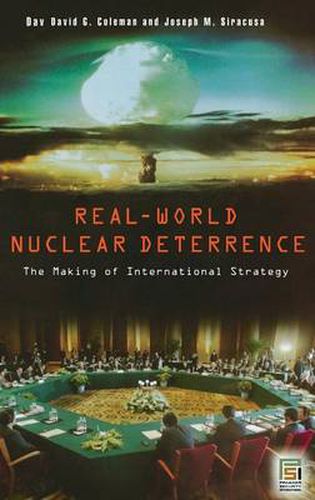Readings Newsletter
Become a Readings Member to make your shopping experience even easier.
Sign in or sign up for free!
You’re not far away from qualifying for FREE standard shipping within Australia
You’ve qualified for FREE standard shipping within Australia
The cart is loading…






The threat of nuclear weapons did not fade away with the collapse of the Soviet Union. Rather, the geopolitical disorders of the post-Cold War era and the rise of global terrorism have ensured that they remain conspicuously present on the world stage as a serious international concern. With the eight or nine nuclear powers maintaining about 27,000 nuclear weapons in their arsenals to this day, it is clear that they are here to stay for the foreseeable future. The primary mission of these nuclear forces has been and remains deterrence. Using plain language rather than policy jargon, this historically focused book shows how nuclear deterrence has worked rather than how it should. It then shows how the growing threat of nuclear proliferation threatens to create a far more complicated international situation largely because of the attendant proliferation of state nuclear deterrents.
By drawing on a wide array of new sources from international archives and the latest in international scholarship, Coleman and Siracusa put some of the most important and enduring problems of nuclear deterrence over the past sixty years into global context. Nuclear deterrence in the real world often operates very differently from how it should according to the prevailing theories, and Coleman and Siracusa take a fresh look at how nuclear weapons policy has been made, finding that it often has had surprisingly little to do with what works and what does not. By studying in depth how governments here and abroad have confronted and dealt with some of the most important issues in nuclear weapons policy, for example, How many nuclear weapons are enough? and What is it that will deter? they find that the making of nuclear weapons policy is a complex, fluid bargaining process subject to the tides of politics, budgets, threat perception, ideology, technology, parochial service rivalries, flawed information, and sometimes just plain wishful thinking.
$9.00 standard shipping within Australia
FREE standard shipping within Australia for orders over $100.00
Express & International shipping calculated at checkout
The threat of nuclear weapons did not fade away with the collapse of the Soviet Union. Rather, the geopolitical disorders of the post-Cold War era and the rise of global terrorism have ensured that they remain conspicuously present on the world stage as a serious international concern. With the eight or nine nuclear powers maintaining about 27,000 nuclear weapons in their arsenals to this day, it is clear that they are here to stay for the foreseeable future. The primary mission of these nuclear forces has been and remains deterrence. Using plain language rather than policy jargon, this historically focused book shows how nuclear deterrence has worked rather than how it should. It then shows how the growing threat of nuclear proliferation threatens to create a far more complicated international situation largely because of the attendant proliferation of state nuclear deterrents.
By drawing on a wide array of new sources from international archives and the latest in international scholarship, Coleman and Siracusa put some of the most important and enduring problems of nuclear deterrence over the past sixty years into global context. Nuclear deterrence in the real world often operates very differently from how it should according to the prevailing theories, and Coleman and Siracusa take a fresh look at how nuclear weapons policy has been made, finding that it often has had surprisingly little to do with what works and what does not. By studying in depth how governments here and abroad have confronted and dealt with some of the most important issues in nuclear weapons policy, for example, How many nuclear weapons are enough? and What is it that will deter? they find that the making of nuclear weapons policy is a complex, fluid bargaining process subject to the tides of politics, budgets, threat perception, ideology, technology, parochial service rivalries, flawed information, and sometimes just plain wishful thinking.